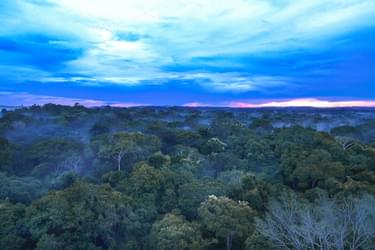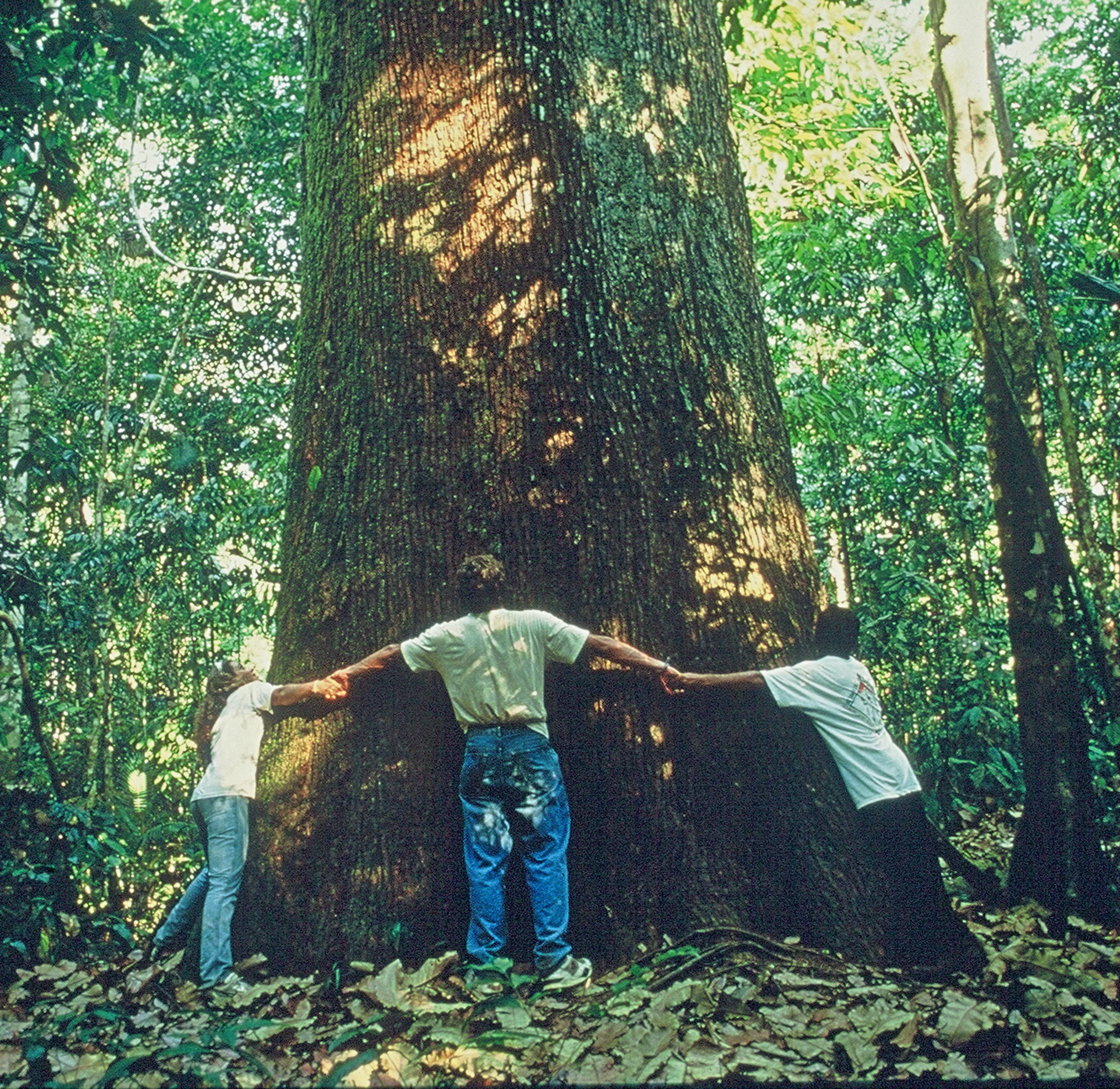


The founders' purpose was to protect the forest and carry out ecotourism activities in the southern Amazon, considered to be one of the world’s most important regions, in terms of biodiversity.
Founding of the Cristalino Jungle Lodge, the first of its kind in the Mato Grosso Amazon, by Vitória Da Riva. Within the original area of 700 hectares, just 2 hectares were used to establish the infrastructure that became today’s Cristalino Lodge. Transporting the materials meant waiting for the river to flood, out of respect for nature’s seasons. Right from the start, the sustainability principles of Conservation International have been implemented in the project and form the basis of the hotel's recycling, conservation, minimal impact and dealing with effluents.
The Cristalino Lodge region was identified by the renowned ornithologist Ted Parker as a "hotspot" for bird diversity, after he had visited the area in 1991, together with Kevin Zimmer, making the first ornithological expedition to the River Cristalino. These initial investigations, along with the tireless efforts of Vitória Da Riva and her family, formed the embryo for a visionary project: the Cristalino Lodge’s endeavors to ensure conservation of the entire Cristalino river basin. Had it not been for the lodge and its well-deserved reputation as one of the world’s best birding destinations, the impressive diversity of the region may not have been recognized.
In 1997, the Cristalino Lodge was instrumental in setting up the first Private Natural Heritage Reserve (RPPN) in the north of Mato Grosso state, which guaranteed the preservation, in perpetuity, of 604 hectares. The reserve has now grown to cover 11,399 hectares of forest – an area almost twice the size of Manhattan Island (NY) – which together with the Cristalino State Park, provides a wildlife corridor to help sustain the impressive diversity of species that are endemic to the region.
The Cristalino Ecological Foundation (FEC) was established with the aim of fostering environmental education, scientific research, the dissemination of knowledge, the promotion of sustainable economic activities and the conservation of private reserves. A model for nature tourism has been developed that blends well-being with appreciation and conservation of the local environment.
Establishing of the Cristalino I and II state parks, with a combined area of 184,900 hectares, situated within the municipalities of Alta Floresta and Novo Mundo. These parks contain the largest alpha-biodiversity in the entire Brazilian Amazon and are officially recognized by the Brazilian Ministry of the Environment (MMA/PROBIO) as an area of extreme importance for the conservation of biodiversity. These parks have made it possible to set up one of the most important corridors of protected areas in the Amazon.
The Flora Cristalino research program, in partnership with the Royal Botanic Gardens, in Kew (UK), the University of São Paulo (USP) and the University of Mato Grosso (UNEMAT), plus additional support, performed the first floristic survey of the southern Amazon, with the cataloging of 7 types of vegetation and 1,356 species, 6 of them new to science. This is an example of how tourism can enhance knowledge and conservation.
In order to provide comfort for our guests, between 2005 and 2015, the hotel's charming bungalows, floating deck, reading room and restaurant were built using ecologically responsible designs by Vitória's daughter, architect Adriana Da Riva.
It is no coincidence that Cristalino is the name given to this magnificent Amazon river with 114 kilometers of crystal clear dark water, flowing from its source in the state of Pará to its mouth in Mato Grosso state, near where the Cristalino Lodge is located. The dark tone is due to the tannin from decomposing vegetation, which is offset by the pink granite rock formations, creating some stunning scenery. Our great mission, reconfirmed in 2022, is to preserve the entire Cristalino river basin, as well as the surrounding areas.







